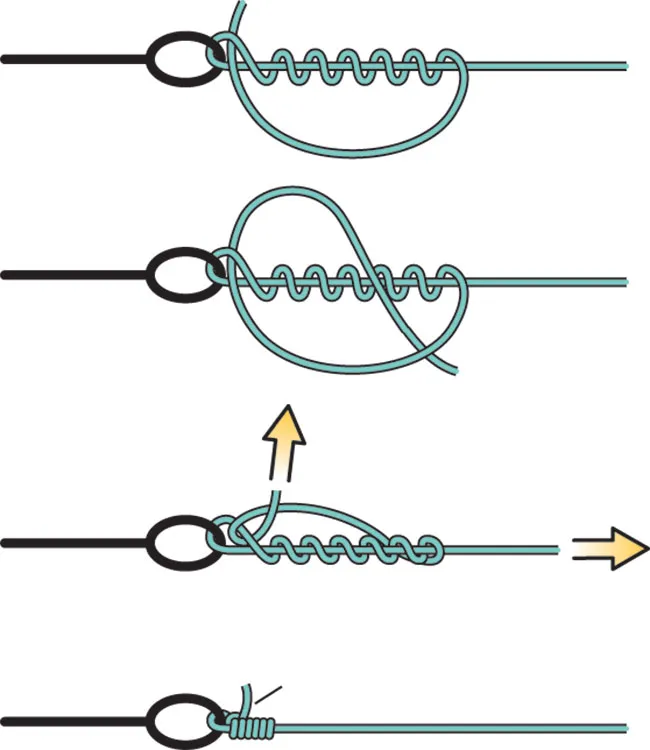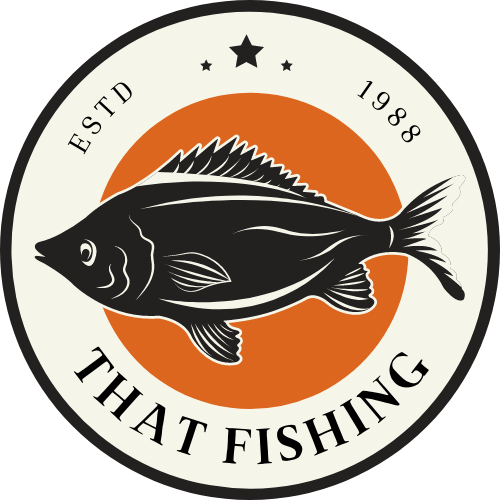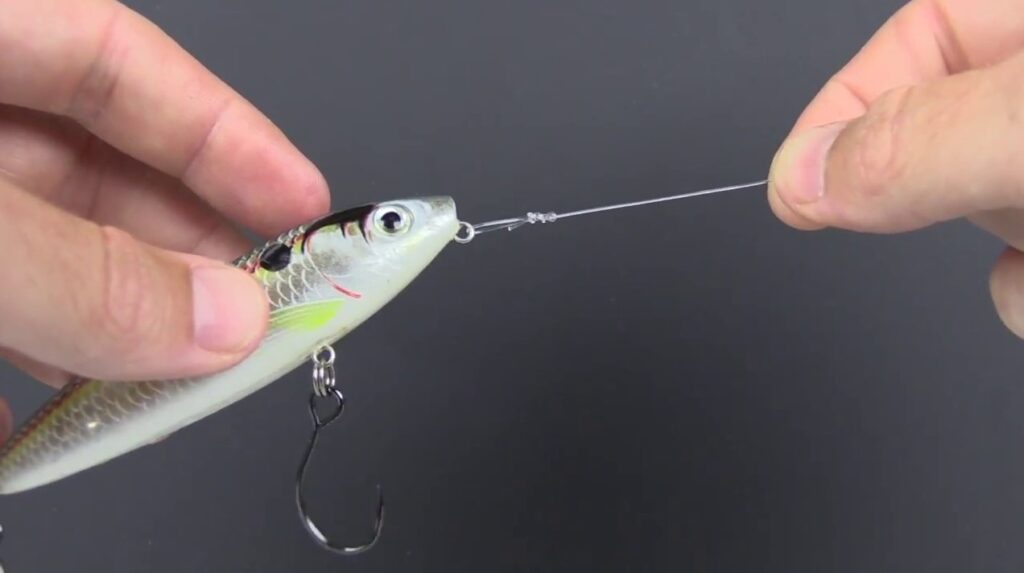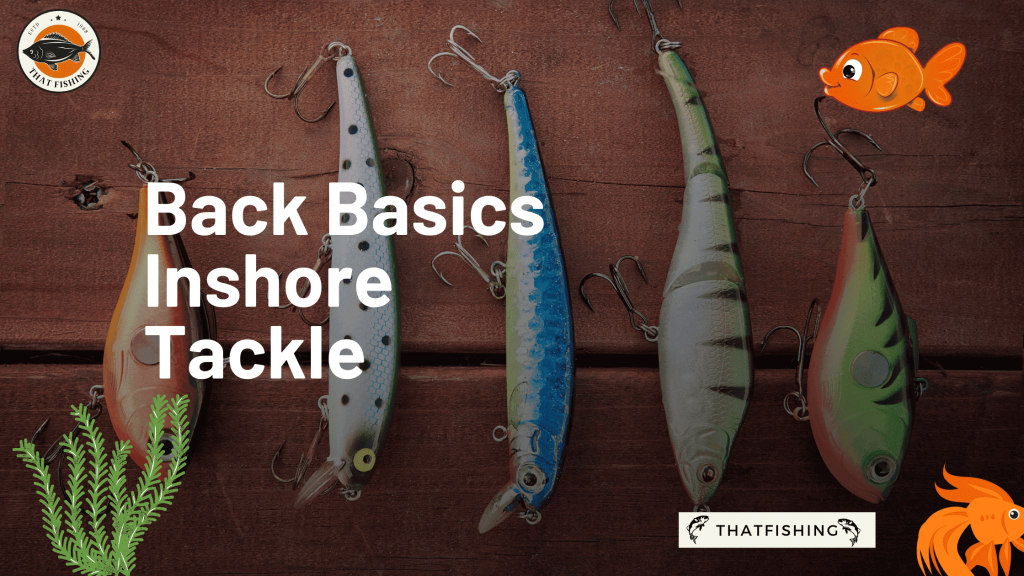When I was still new to fishing, my father told me that it is essential for me to know why knot fishing is crucial to every angler. From that moment, I gradually realized how fishing knots could contribute to my fishing success.
Do you want to know what I have learned about fishing knots? Are you intrigued by the various fishing knots you can use for different fishing situations? Do you want to find out how important fishing knots are?
If your answer is yes, I suggest that you continue to read this article, and prepare your fishing knots and rigs.
Why Is Knot Fishing Not As Easy As You Think?
You Need To Understand Some Terms To Understand How To Tie A Knot
You Need To Know Some Guidelines Before Learning New Knots
There Are Several Types Of Fishing Knots
- Palomar Knot
- Blood Knot
- The Improved Clinch Knot
- Surgeon’s Knot
- The Spider Hitch Knot
You Need To Understand Some Terms To Understand How To Tie A Knot
Knots use precise terminology, and it is essential to know these words so you can efficiently tie your knot.
- Standing line: this refers to the line’s major part. Sometimes, it can also refer to the leader itself who is on top of your knot.
- Tag end: the term anglers use to refer to the line’s end which you use in tying the knot; this is also the part which fish catchers trim back after they tighten and test the knot. It is also sometimes called “tag.”
- Wraps: these are the turns that are tight. When applying these, anglers have to make sure that they do it fairly and make sure that one turn is one hard up against the succeeding turns.
- Standing end: refers to the line which comes from the fishing reel.
- Turns: These are the twist that you form when you take or pass the tag end through a loop or around the standing line.
- Loop: A big circle or oval of fishing lines that you form when creating a knot.
- Hitch: these are hitches that you form within a knot. It is important to prevent the tag end from slipping.
You Need To Know Some Guidelines Before Learning New Knots
- First: you have to remember that the right style is very essential. If you do not want to lose your fish, it is better to have a reliable and secure knot.
- Second: you must practice tying fishing knots with your fishing lines and hooks. You should repeat it again and again until you can tie each knot.
- Third: you should put water or saliva when you pull your knot tight. This matter may help you to prevent damaging the fishing line, and it will also allow you to pull the knot tight. This tip helps you do away with damage, and it also helps in tying the knot tightly.
- Fourth: always ensure that the way you pull the knot is tight enough for you not to encounter slippage.
- Fifth: use a nail clipper to trim knots. When you pull a good knot tight enough, you prevent it from getting untucked. Cutting the ties neatly also prevents the knot from getting weeds or snags.
Another important thing to bear in mind is that you should not burn the tag end as heat can cause damage to your knot and line.
- Seventh: you always have to make sure that there is at least one foot remaining on the line’s “tag end”; this is important so you can tie it with less difficulty.
- Eighth: when you tighten the knot, you must pull up each end; this step may apply to the tag end and standing end for some types while for other styles of tying, you may have to pull up more than three ends.
- Lastly: always remember that knots are not often as robust as the line, and anglers express it in percent to know its strength.

There Are Several Types Of Fishing Knots
There are many types of fishing knots you may come across especially when you search the net, but we cannot discuss all of them yet.
Otherwise, it will cause knots of overloaded information in your brain, so let me just tackle my top five fishing knots for now which I usually use and which give me my desired result. I also would like to help you learn when to apply them.
Palomar Knot
I use this type of knot when I use lines that are at least or are over 20 pounds test. It has a strength of 95%, and you will need a little bit more lines to do it because you will have to double it first through the hook’s eye or lure.
This style is also what I prefer when I am using a downrigger and need to attach the hook.
To get more details on how to make the Palomar Knot, please feel free to check the video I included below:
Blood Knot
I typically use this type of knot when my lines have big differences in diameters. I also find it useful when I tie test lines that are 15-20 pounds. However, it may not be effective when you want to join 15-50 pound test lines.
If you want to appreciate further how you can make the Blood Knot, you may check the video below.
The Improved Clinch Knot
This knot is just a slight version of the older clinch knot. The only difference is that the line’s final tuck back through a loop. This difference causes the knot test to be 95% of the strength of the line.
When I use lines that are up to a 20-pound test, this is the type of knot I find best.
The audio-visual presentation below will surely help you appreciate how you can do the Improved Clinch Knot.
Surgeon’s Knot
This method is one quick way of joining two lines. In doing this style, I make sure that one line is short because I have to bring one of the line’s ends through the overhand loop that I form.
If you plan to use this fishing knot, the video below will be useful.
The Spider Hitch Knot
The secret in doing this type of knot is to make sure first that you form a double line; this allows it to hold heavier hooks or leaders.
This video I have added thoroughly explains how to tie the Strong Spider Hitch Knot.
What about fishing lines? Do you have to purchase a new one that fits the method you want to apply? The good news is that all these styles of tying your knots work well for most fishing lines including the one which you already have.
If you are interested, however, in purchasing a new one to add to your collection of fishing gear and tackle, there is a quite long list of them, and you can surely find one you think works for you by checking the link below.
Related:
- Best Accommodations To Visit For A Fishing Trip
- Troubleshooting Tips for Fishing Reel Repair
- Expert-recommended braided fishing lines
Did you learn something about fishing knots?
The things I mentioned are just some of the reasons why knot fishing is a must-learn skill. Truly, there can be a lot more that you need to know about fishing knots which will undoubtedly lead you to become a better angler.
If this article became a useful tool for you to learn new knowledge about fishing, please don’t hesitate to post your insights in the comments section below or share this article with your friends.



